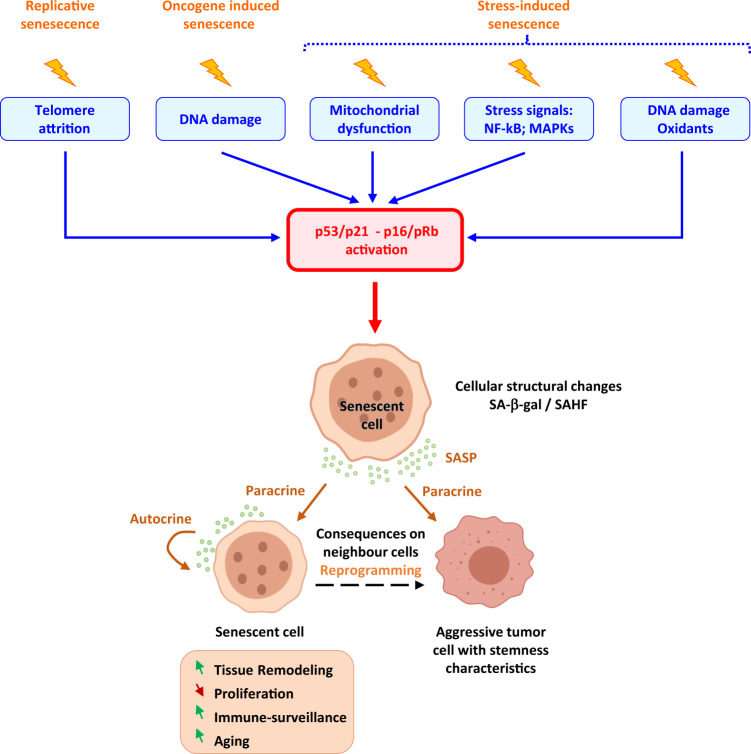Fig. 1. Major molecular and cellular causes of senescence implantation and consequences of SASP secretion on neighbour cell reprogramming.
Many factors lead to senescence implantation, such as telomere replication, oncogene activation, damaging stimuli and mitochondrial dysfunction. These factors all lead to DNA damage persistence, ROS (reactive oxygen species) increase and stress pathway activation, which drive permanent growth arrest and cellular structural changes. When senescence is engaged, these cells express SA-β-gal (senescence-associated β-galactosidase) and SAHF (senescence-associated heterochromatin foci). They actively communicate with their microenvironment through the SASP (senescence associated-secretory phenotype). Depending on its composition, secreted factors can either drive both the autocrine and paracrine induction of senescence, immunoclearance, and tissue remodelling or enhance the aggressiveness of neighbouring tumour cells.

